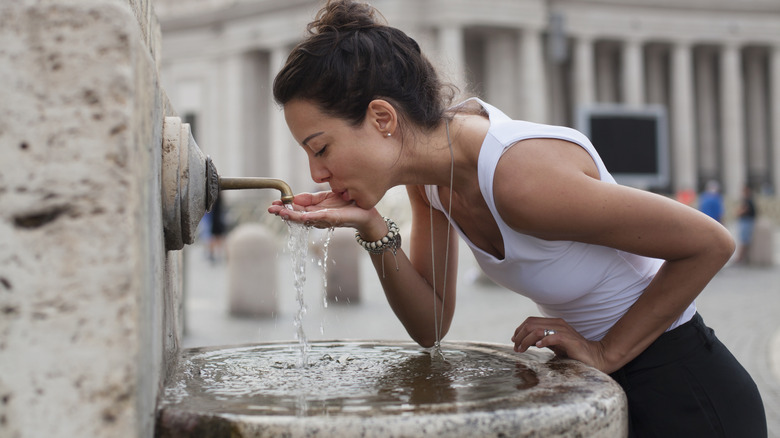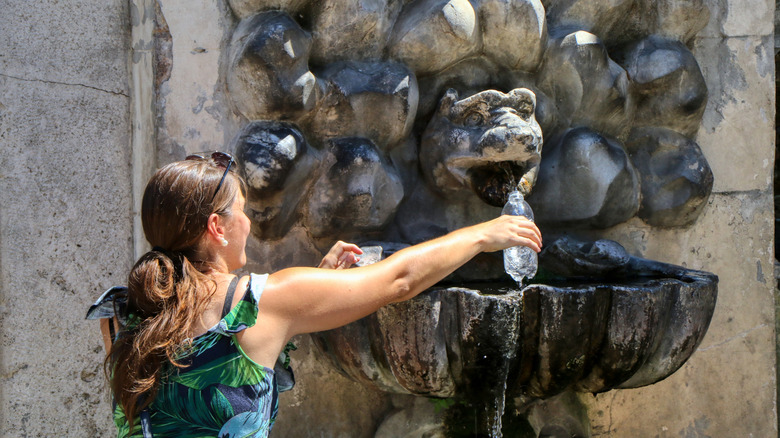Avoid This Rookie Mistake Tourists Often Make About Staying Cool In Rome
We may receive a commission on purchases made from links.
There you are, walking around Rome on an August afternoon and the temperature has hit 90 degrees. Pedestrians walk slowly from one shady spot to the next. Stray cats are sprawled out on the pavement, too hot to move. You shuffle along, the sun beating down from a cloudless sky. You're thirsty, and you spot an alimentari — or convenience store — across the street. You imagine finding a refrigerator, opening its door, and grasping an ice-cold bottle of water in your hand.
But wait! You don't have to spend money if you don't want to. Parts of Rome may look old and dog-eared, and you may find a good amount of litter in streets, but travelers can count on one thing: clean, drinkable water. Italy's capital boasts more than 2,000 pubic water fountains, which are free to use and absolutely safe. Such a fountain, known as a nasone, is easy to spot on the street and often carved from stone. Cup your hands, fill a Nalgene, or splash some into a dish for your globetrotting dog — these are spigots you can trust.
We understand if you're skeptical because there are plenty of places in Europe where tourists need to be cautious of the tap water. Rome has also struggled with garbage disposal in recent years, and tourists often perceive the city as unsanitary. The most famous water source in Rome is the Trevi Fountain, and not only are tourists not allowed to drink from it, but this is one Roman oasis where the water is not actually potable.
2,300 years of public drinking water in Rome
Still, rigorous testing has concluded that Roman water fountains are safe to use, without needing to boil or filter the water before you swallow it. Indeed, Rome was probably the first city in Europe to enjoy running water, thanks to its sophisticated aqueduct system that dates back to 312 B.C.E. While this system has been largely rebuilt and updated since Caesar's time, the tradition of public fountains was basically invented here. Interestingly, part of the city still uses the "Cloaca Maxima," a 1,000-foot sewer system built by the Romans 2,400 years ago, which still works — although this has no direct connection to the fountains.
Bottled water is pretty cheap in Italy, often costing less than $1, and many people prefer the comfort and portability of a polymer-based vessel. But a growing number of Italians are critical of single-use bottles, and some regions have even banned them. If you're looking to save money — and help the environment — the nasoni are a refreshing option. While you're prepping, here are 12 other things tourists should never do when visiting Italy.

